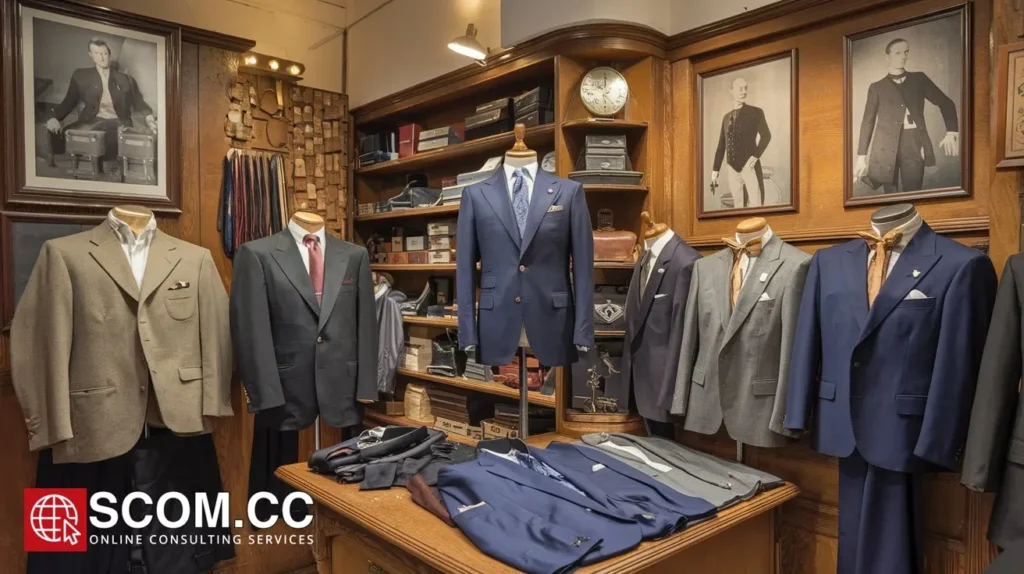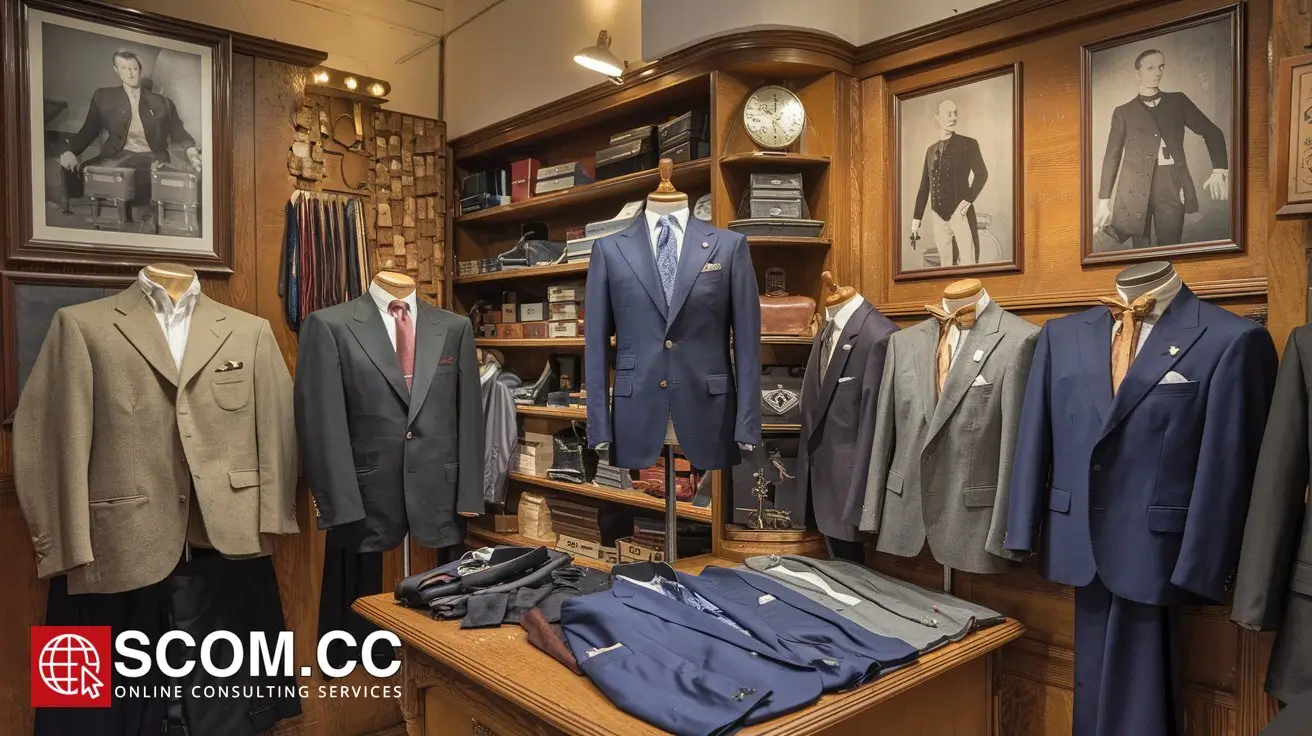How Did World Wars Impact Tailoring Practices and Trends?

- History of Tailoring: How Did World Wars Impact Tailoring Practices and Trends?
- Impact of World War I on Tailoring
- Impact of World War II on Tailoring
- The Long-Term Effects of the World Wars on Tailoring
- Conclusion
-
FAQ:
- 1. How did World War I affect tailoring materials?
- 2. What influence did military uniforms have on civilian fashion during World War II?
- 3. How did women's fashion change during the World Wars?
- 4. What was the "Utility Clothing Scheme" during World War II?
- 5. How did the World Wars contribute to the democratization of fashion?
- 6. What long-term cultural shifts were influenced by wartime tailoring?
- 7. How has wartime tailoring influenced modern sustainable fashion?
History of Tailoring: How Did World Wars Impact Tailoring Practices and Trends?
The art of tailoring has long been a symbol of cultural expression, a craft that reflects the fashion preferences, economic conditions, and societal values of its time. Yet, few periods in history have influenced the evolution of tailoring as profoundly as the World Wars. These global conflicts reshaped industries, economies, and societies, leading to significant shifts in tailoring practices and trends. In this comprehensive analysis, we delve into how World War I and World War II impacted the art of tailoring, transforming it from a luxury service to a more pragmatic and widespread necessity.
Impact of World War I on Tailoring
Material Shortages and Innovations
World War I brought about severe material shortages due to the redirection of resources to the war effort. Wool, silk, and other fine fabrics became scarce as they were prioritized for military uniforms and equipment. As a result, tailors had to innovate with the materials available. Blended fabrics—combinations of wool with synthetic materials—emerged as a practical alternative. This period also marked the rise of utility clothing, where function often outweighed fashion, a trend that would carry forward in various forms.
The Rise of the Military Aesthetic
The military aesthetic had a significant influence on civilian clothing during and after World War I. Trench coats, for instance, transitioned from military gear to a staple of men's fashion. Originally designed for British officers, the trench coat became a symbol of both utility and style. The breeches and jodhpurs worn by soldiers influenced the design of civilian trousers, leading to more structured and practical garments that still held an element of style.
Women's Fashion and the Shift Toward Practicality
World War I also had a profound impact on women's fashion. As men went to war, women took on roles traditionally held by men, leading to the need for more practical clothing. The elaborate, restrictive garments of the pre-war era were replaced by simpler, more functional designs. Skirts became shorter, and waistlines dropped, reflecting a shift towards comfort and utility. The war also paved the way for women's suits, which mirrored the military uniforms in their structure and formality.
Impact of World War II on Tailoring
Rationing and the Advent of Utility Clothing
The material shortages seen in World War I were even more pronounced during World War II. Fabric rationing became a government-mandated necessity, and tailors were forced to work within strict guidelines. The British government, for example, introduced the "Utility Clothing Scheme," which dictated the maximum amount of fabric that could be used in garments. This led to the creation of simplified designs that minimized waste. Patch pockets, beltless designs, and shorter hemlines became standard features.
The Influence of Military Uniforms on Civilian Fashion
World War II further entrenched the military influence on fashion. Bomber jackets, pea coats, and khaki trousers found their way into civilian wardrobes, symbolizing resilience and patriotism. The structured silhouette of the military uniform, with its sharp lines and emphasis on functionality, became a dominant trend. Double-breasted suits, reminiscent of naval uniforms, gained popularity among men, while women's fashion borrowed heavily from the WAAF (Women’s Auxiliary Air Force) and WAC (Women’s Army Corps) uniforms, incorporating elements like shoulder pads and boxy jackets.
Post-War Recovery and the Revival of Tailoring
The end of World War II marked a period of recovery and renewal for the tailoring industry. As economies began to rebuild, there was a return to luxury and craftsmanship. However, the war had permanently altered consumer expectations. There was now a demand for clothing that balanced style with practicality. The post-war era saw the rise of bespoke tailoring as a symbol of status and refinement, yet the influence of wartime pragmatism persisted, particularly in the preference for durable fabrics and timeless designs.
The Long-Term Effects of the World Wars on Tailoring
The Democratization of Fashion
One of the most significant long-term impacts of the World Wars on tailoring was the democratization of fashion. Before the wars, tailoring was largely the preserve of the wealthy elite. However, the need for mass-produced uniforms during the wars laid the groundwork for the ready-to-wear industry. This shift made tailored styles accessible to a broader population, blending custom craftsmanship with the efficiency of mass production.
Cultural Shifts in Gender Norms
The wars also catalyzed cultural shifts in gender norms, which were reflected in tailoring practices. Women's fashion became more aligned with men's, with an emphasis on suits, trousers, and structured silhouettes. The utility and androgyny of wartime fashion continued to influence designers in the post-war years, leading to the emergence of power dressing in the 1980s, which echoed the military-inspired designs of the 1940s.
Sustainability and Ethical Tailoring
In recent years, the influence of the World Wars has been seen in the growing trend towards sustainability and ethical tailoring. The resourcefulness required during the wars has inspired modern designers to focus on minimal waste, durability, and multifunctionality. This approach harkens back to the utility clothing of the wartime era, which emphasized practicality without sacrificing quality.
Conclusion
The World Wars had a profound and lasting impact on tailoring practices and trends. From the material shortages and innovations of World War I to the utility-driven designs of World War II, these global conflicts reshaped the way we approach fashion and clothing production. The wars democratized fashion, broke down gender norms, and set the stage for the rise of ready-to-wear clothing. Even today, the influence of these periods can be seen in the trends towards sustainability and ethical fashion. As we continue to evolve in our sartorial choices, the lessons of wartime tailoring remain relevant, reminding us that fashion is not just about aesthetics but also about function, resilience, and adaptability.
Summary Table: Impact of World Wars on Tailoring Practices and Trends
| Aspect | World War I | World War II | Long-Term Effects |
|---|---|---|---|
| Material Availability | Severe shortages of wool, silk, and fine fabrics led to the use of blended and synthetic fabrics. | Even stricter fabric rationing, leading to simplified, utility-driven designs. | Rise of ready-to-wear clothing and sustainability focus. |
| Military Influence | Introduction of military-inspired styles like trench coats and structured trousers. | Further entrenchment of military styles, such as bomber jackets and double-breasted suits. | Military influence persisted in post-war fashion and gender norms. |
| Women's Fashion | Shift from elaborate garments to more practical, functional designs. | Continued emphasis on practicality, with women's fashion borrowing from military uniforms. | Long-term cultural shift towards androgynous styles and power dressing. |
| Tailoring Trends | Utility clothing gained prominence, prioritizing function over fashion. | Utility clothing schemes dictated minimalist designs, emphasizing durability and efficiency. | Balance between luxury and practicality in post-war bespoke tailoring. |
| Post-War Recovery | N/A | Revival of luxury tailoring alongside practicality in designs. | Permanent changes in consumer expectations for durable, timeless clothing. |
| Democratization of Fashion | N/A | N/A | Ready-to-wear industry made tailored styles accessible to the masses. |
| Sustainability and Ethical Tailoring | N/A | N/A | Modern focus on minimal waste and multifunctionality, inspired by wartime resourcefulness. |
FAQ:
1. How did World War I affect tailoring materials?
FAQ: World War I caused severe shortages of luxury fabrics like wool and silk, leading tailors to use blended and synthetic materials to meet demand.
2. What influence did military uniforms have on civilian fashion during World War II?
FAQ: Military uniforms greatly influenced civilian fashion during World War II, introducing trends like bomber jackets, pea coats, and double-breasted suits into mainstream clothing.
3. How did women's fashion change during the World Wars?
FAQ: Women's fashion shifted towards practicality during the World Wars, with shorter skirts, lower waistlines, and designs inspired by military uniforms becoming more common.
4. What was the "Utility Clothing Scheme" during World War II?
FAQ: The "Utility Clothing Scheme" was a government initiative during World War II that regulated the amount of fabric used in garments, leading to simplified and practical designs.
5. How did the World Wars contribute to the democratization of fashion?
FAQ: The mass production of military uniforms during the wars laid the groundwork for the ready-to-wear industry, making tailored styles more accessible to the general public.
6. What long-term cultural shifts were influenced by wartime tailoring?
FAQ: Wartime tailoring contributed to long-term cultural shifts, including the blending of gender norms in fashion and the rise of power dressing in later decades.
7. How has wartime tailoring influenced modern sustainable fashion?
FAQ: The resourcefulness required during the wars has inspired modern designers to focus on sustainability, emphasizing minimal waste, durability, and multifunctionality in fashion.

To explore more about tailoring, visit our Blog of Tailoring. If you have any questions or need assistance, go to our contact page. Additionally, you can find more information about tailoring and consulting at this tailoring and consulting portal.

Leave a Reply